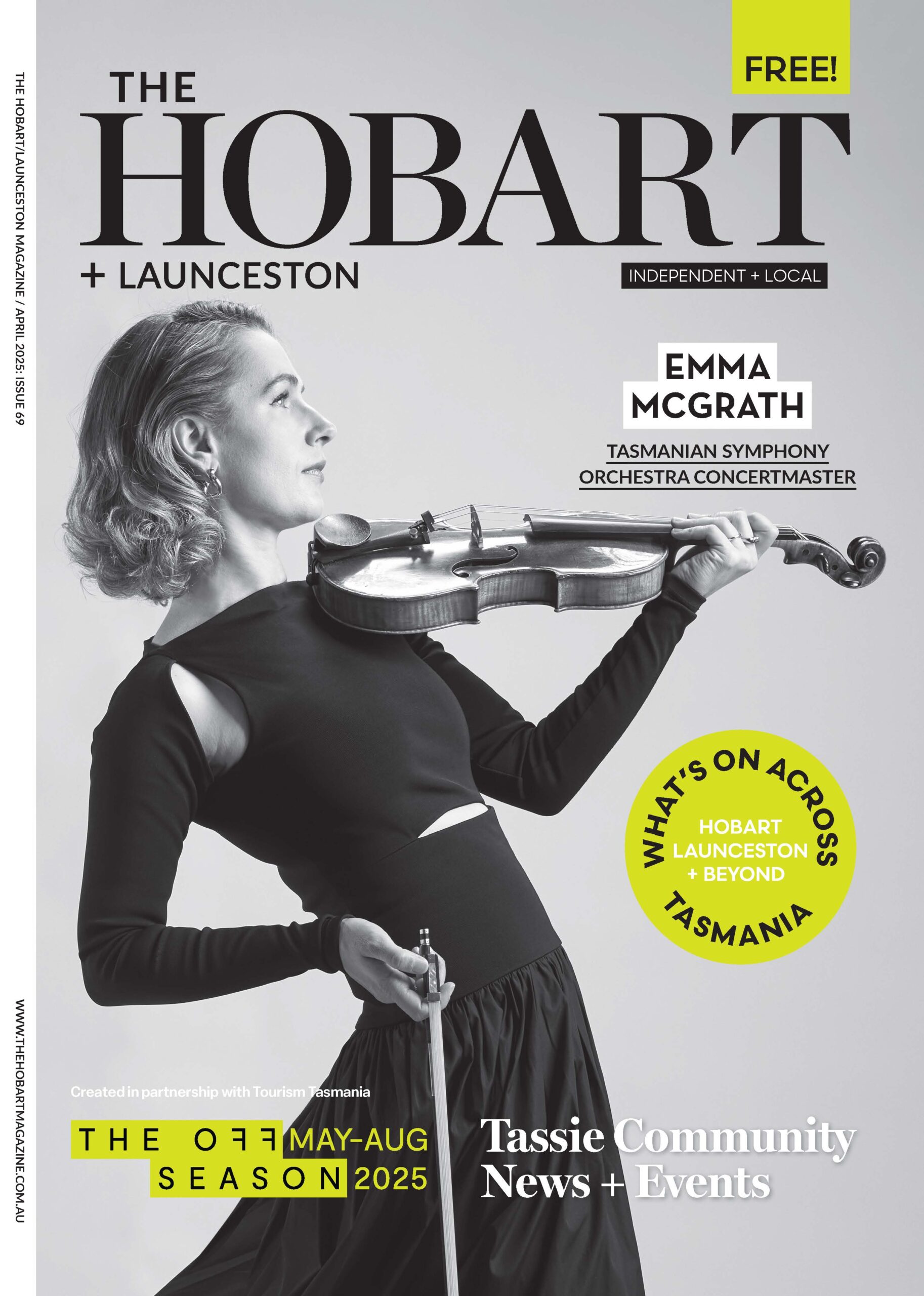A New Voice at Dark Mofo: Making Space for Aboriginal Representation
by Sarah Aitkin

Tasmanian Aboriginal artist Caleb Nichols-Mansell has had a huge first half of the year. In March, he opened Tasmania’s first dedicated palawa arts and cultural hub – Blackspace Creative in pataway/Burnie.
A month later he took on the role of cultural advisor with Dark Mofo. He spoke to Sarah Aitken on the eve of the festival’s post-Covid return.
Tell us about your role with Dark Mofo? I’ve been engaged to provide cultural advice and assistance in the programming and delivery of the festival this year. This is in light of the recent controversy associated with the programming of a now-cancelled artwork calling for the blood of First Nations people by Santiago Sierra. I think it is also important to note that whilst I am providing cultural advice and represent the Tasmanian Aboriginal community; it does not mean that I speak on behalf of every community member. We have respected community artists who are established in their careers who won’t engage with the festival but we equally have respected, established community artists who have chosen to engage. This process is about building relationships and improving access for our community to these opportunities should they wish to engage. As the work progresses, the role will evolve but I see my work with Dark Mofo continuing for a while to come.
Why is it important to have Aboriginal artists involved in a festival like this? I think it’s not only important to have Aboriginal artists and arts workers in Dark Mofo but all major festivals, events, and arts activities. I truly believe that that is what the arts and cultural sector has been lacking for so long – not because the talent didn’t exist but because the opportunities weren’t there or obstacles were often in the way. There is a cultural shift currently happening within the arts and cultural sector and this needs to be attributed to those community artists and arts workers who worked hard and have paved the path that I and other emerging artists are now beginning to walk.
How did you feel when the Sierra flag project was announced? Initially, I was concerned. I was concerned for my Elders and those in our community who are still deeply traumatised by the intergenerational effects of invasion and the dispossession of our people, families and loved ones. I was concerned for the festival and for the Tasmanian community more broadly as I knew that the fall-out from this would be quite large and the clean-up could potentially squash any plans of a festival going ahead this year – which was needed – after last year’s was cancelled due to COVID. We cannot deny the benefit that Dark Mofo brings not only to Hobart but the broader Tasmanian economy through the visitors, money and engagement bought by the draw of the festival and what it has become.
And how did you feel when it was removed from the program? Honestly, relieved. I felt relief because it was the only way we were going to be able to move forward and we had to because the truth is, the festival isn’t going anywhere and nor are our community or First Nations artists more broadly. In order to affect change, we had to work together to find a solution in moving forward and past this and it is for that exact reason I engaged with Leigh Carmichael and his team.
How do you feel Tasmania is going in terms of Aboriginal representation in the arts industry? I feel at present we’re really representing in terms of the arts and cultural sector amplifying our voices, practices and connections. Personally, I just hope this appetite and support for our community artists and art workers is sustained over the long term. For centuries, literally going back to the invasion of our state, our community artists and arts workers have been advocating for the inclusion and recognition of our arts and cultural practices and it’s only now, nearly 200 years later that this appreciation and inclusion is being realised.
Congratulations on the opening of Blackspace Creative Arts and Cultural Hub. Tell us about the journey to here.
Journey is definitely the word. We started out as an online sales and showcase space which then grew to the physical space as a result of a partnership between Business North-West and Renew Initiatives Australia. Under this partnership we have access to this physical space for a period of one year, rent free. After this time, to secure the space we need to secure further funding.
What do you love about Tasmania? My connections to this sacred Country, the fact my Old People walked this land for thousands upon thousands of years before it was invaded and colonised. Our isolation from the broader world and how this influences our ways of being and living; for better and for worse. It makes us unique, a bit quirky and maybe even a little odd but I love this state and the people who call it home. Not always and not always at the same time, but whenever I travel my heart and Spirit yearns for home.
You can visit Blackspace Creative Arts and Cultural Hub at Shop 7, 28-32 Wilson Street in Burnie or online at www.blackspacecreative.com.au

